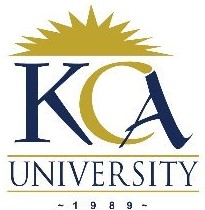 UNIVERSITY EXAMINATIONS: 2018/2019
UNIVERSITY EXAMINATIONS: 2018/2019
EXAMINATION FOR THE DEGREE OF BACHELOR OF SCIENCE IN
INFORMATION TECHNOLOGY
BAC 2303: NETWORK PROGRAMMING
BIT 3105: NETWORK PROGRAMMING
BCT 2203: CLIENT/SERVER COMPUTING
FULL TIME/PART TIME/DISTANCE LEARNING
DATE: DECEMBER 2018 TIME: 2 HOURS
INSTRUCTIONS
Answer Question ONE (Compulsory) and Any Other Two Questions.
Question 1 (30 Marks) – Compulsory
(a) Briefly explain why heterogeneity caused by different operating systems and hardware present
challenges to distributed application programming. [4 Marks]
(b) Identify and briefly discuss any two (2) computing resources that an operating system
manages. [4 Marks]
(c) List and briefly explain three (3) benefits of middleware to network applications.
[6 Marks]
(d) Explain why it is necessary to have the source address on an Ethernet frame. [4 Marks]
(e) (i) State the similarity between physical and logical addresses. [2 Marks]
(ii) What is the difference between the two? [2 Marks]
(f) Define the following terms as they relate to network programming:
(i) port [1 Mark]
(ii) host [1 Mark]
(iii) child process [1 Mark]
(iv) transparency [1 Mark]
(g) List and briefly explain any two (2) things a child process inherits from a parent process.
[4 Marks]
Question Two – (Total Marks: 20)
(a) (i) With an aid of a simple program, explain the concept of tiers. [6 Marks]
(ii) Is your program a “1-Tier”, “2-Tier” or “3-Tier”? Explain. [4 Marks]
(b) What are the entries that make up a half association? Describe them. [6 Marks]
(c) It has been said that flow control and congestion control are equivalent. Is this true for the
Internet’s connection-oriented service? Are the objectives of flow control and congestion
control the same? [4 Marks]
Question Three – (Total Marks: 20)
(a) A middleware provides two (2) forms of distribution transparency. List and discuss them.
[4 Marks]
(b) Extensibility as an attribute of a middleware refers to the ease with which a system can be
adapted to meet new requirements. List and explain the three (3) types of extensibility.
[6 Marks]
(c) One can not discuss a real data link layer implementation without Ethernet featuring in the
discussion. Explain the three (3) perspectives of Ethernet in this discussion. [6 Marks]
(d) Type of Service and Time-To-Live are two of the many fields of an IP datagram. Briefly
explain their function. [4 Marks]
Question Four – (Total Marks: 20)
KCA University has purchased the Class B IP address 150.5.0.0. The Network Engineer has
discovered that he needs to create subnets with 100 hosts for the University. You have been assigned
the task of implementing these subnetworks using the purchased Class B address.
(a) What is the number of hosts in binary? [2 Marks]
(b) What is the subnet mask for entire network? Show your working. [4 Marks]
(c) Determine the increment and list the IP address ranges for the first six subnetworks.
[6 Marks]
(d) Discuss any four (4) merits of using VLANs in your network. [4 Marks]
(e) Briefly discuss why subnetting is important in distributed systems deployment. [4 Marks]
Question Five – (Total Marks: 20)
(a) Using the appropriate Network APIs, differentiate between a Client program and a Server
program. [6 Marks]
(b) List and breifly explain the two (2) types of TCP segements. [4 Marks]
(c) Using an appropriate diagram, explain how RPC is implemented. [10 Marks]